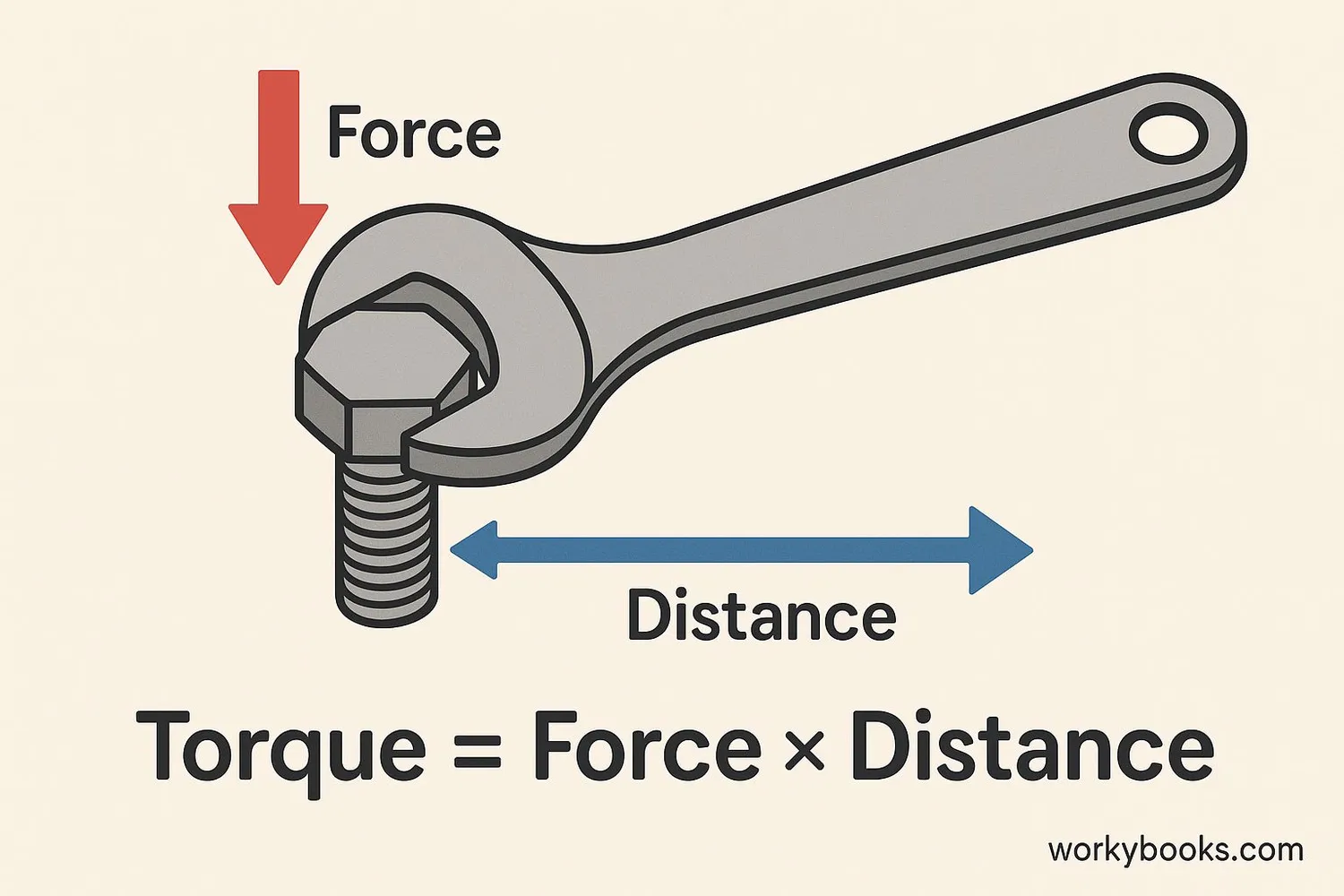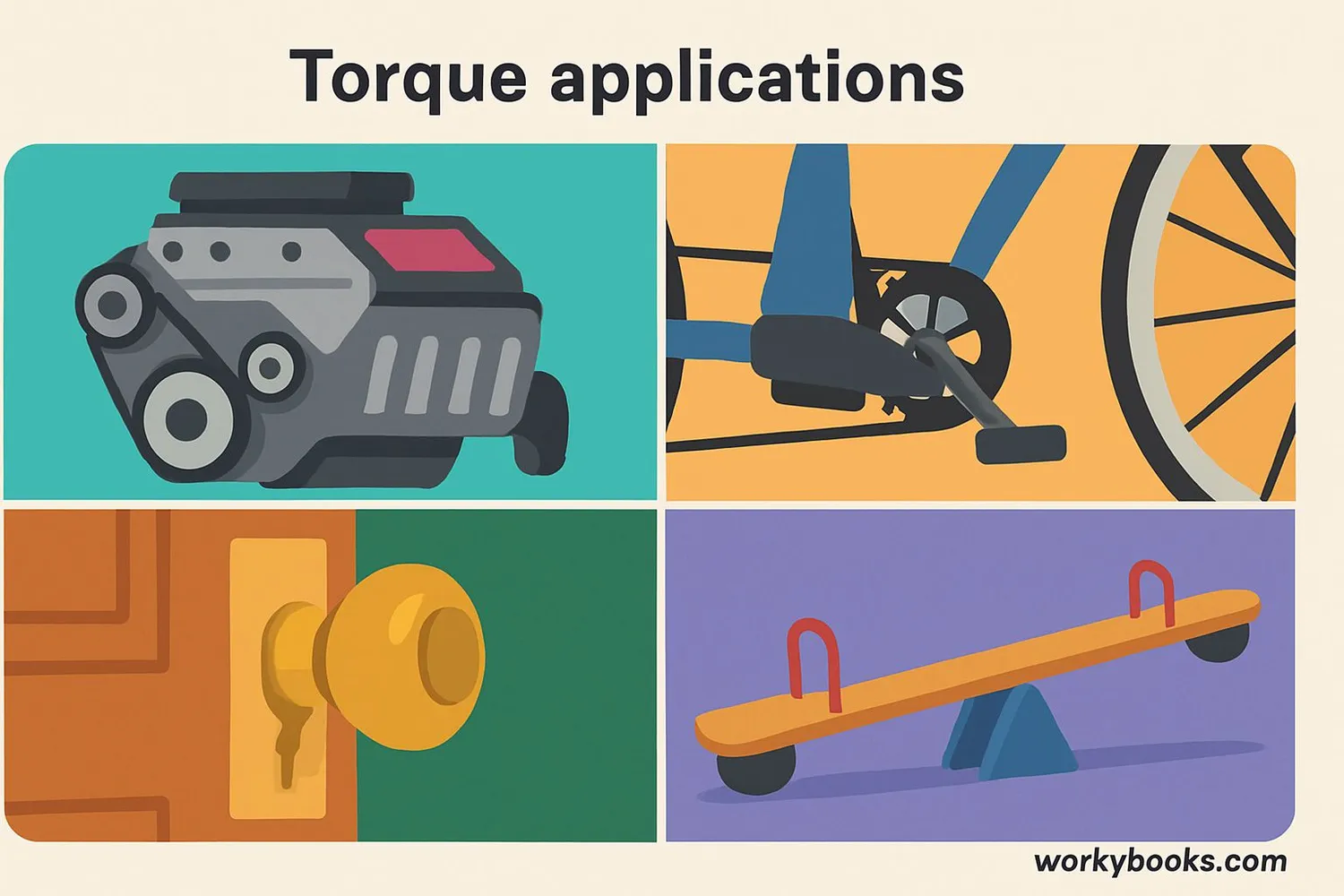Torque - Definition, Examples, Quiz, FAQ, Trivia
Discover how rotational force makes things turn and spin in our world
What is Torque?

Torque is the turning or twisting force that causes objects to rotate. It's what makes wheels turn, doors open, and wrenches tighten bolts.
Think of torque like this: when you push on a door to open it, the force you apply combined with how far you are from the hinges creates torque. The farther your hand is from the hinges, the less force you need to open the door. That's torque in action!
In physics, we define torque with this simple equation:
Torque = Force × Distance
Where force is measured in Newtons and distance is measured in meters.
Science Fact!
The unit for measuring torque is the Newton-meter (N·m). This tells us how much rotational force is being applied.
How Torque Works

Torque has three important parts: the force applied, the distance from the pivot point (called the lever arm), and the direction of the force. Here's how these elements work together:
Axis of Rotation
The fixed point around which an object rotates (like door hinges)
Lever Arm
The distance from the axis to where force is applied
Force Direction
Force must be perpendicular to the lever arm for maximum effect
Right-Hand Rule
Thumb points along axis, fingers curl in rotation direction
Static torque doesn't produce rotation (like pushing on a closed door), while dynamic torque causes rotation (like turning a bicycle pedal). The direction of torque follows the right-hand rule: if you curl your fingers in the direction of rotation, your thumb points along the axis in the torque direction.
Real-World Example!
When you use a longer wrench, you increase the lever arm distance, which means you can apply the same force but get more torque to loosen a tight bolt.
Why Torque Matters

Torque is essential in our daily lives and in technology. Understanding torque helps us design better machines and solve practical problems:
Transportation
Car engines produce torque to turn wheels. More torque means better acceleration!
Tools & Machines
Wrenches, screwdrivers, and drills all use torque principles
Everyday Actions
Opening doors, turning faucets, and using scissors all involve torque
Torque is also crucial in:
• Sports: Baseball bats, golf clubs, and tennis rackets all rely on torque for power
• Engineering: Bridges and buildings must withstand torque forces
• Human Body: Our joints produce torque when we move
• Space Exploration: Rockets use torque for steering in space
Understanding torque helps us design more efficient machines and solve practical problems in engineering and everyday life.
Torque Quiz
Test your torque knowledge with this quiz! Answer all 5 questions to see how much you've learned.
Frequently Asked Questions
Here are answers to common questions about torque:
Fun Torque Trivia
Discover some amazing facts about torque:
Rocket Torque
Spacecraft use special thrusters to create torque for turning in space where there's no air or ground to push against!
Insect Torque
Some insects can produce incredible torque relative to their size. The rhinoceros beetle can lift 850 times its own weight!
Sports Torque
Baseball pitchers create about 100 N·m of torque on their shoulder during a fastball throw - that's like hanging 50 bags of sugar from your arm!
Bridge Torque
Engineers must calculate torque forces on bridge supports to prevent twisting during high winds or earthquakes.


